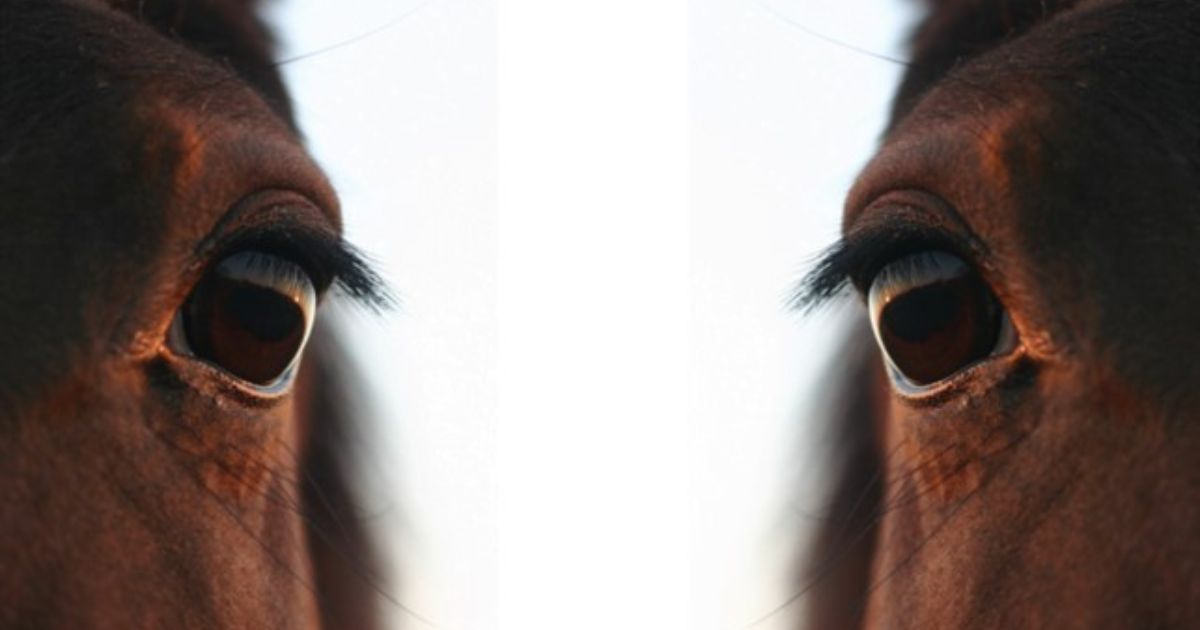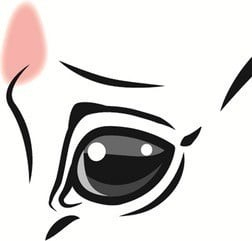Menu

Do you know the expression equine pain face? When your horse is in pain and trying to show it? It can be hard to see - even for professionals. That is why too many horses walk around with undetected pain. But after several attempts, researchers have succeeded in deciphering the so-called equine pain face. It is an expression of the changes in the horse's facial expression that signals pain. Find out why it is an important prerequisite to improve horse welfare in everyday training and high-level performance.
You may also like to read: Top 10: Dangerous things seen through your horse's eyes
We humans have since the beginning of time had an ability to recognize emotions through facial expressions. Our facial expressions change when we are happy, when we laugh, exert ourselves or experience pain. Maybe you know the feeling of narrowing your eyes, tightening your mouth or frowning if you bump into something? But what do you do if you have to assess whether an animal is in pain? We have taken a look at the history books and looked at what they can tell us about the equine pain face.
Darwin was the man behind the theory of evolution. He discovered that humans an apes have evolved from a common ancestor over the last 60 million years. Back in 1872, he claimed that animals could exhibit the same kind of facial expressions as humans when they are in pain. But only recently has facial expressions been recognized as a method of assessing pain impact in animals, including horses.
Researchers from Italy, Germany and the UK have jointly developed and tested a standardized pain scale based on horses' facial expressions. This scale is called the Horse Grimace Scale or just HGS.
Equine pain face is not just about detecting pain and treating it so that the horse's immediate well-being is increased. It is also very much about discovering the underlying - and possibly serious conditions - that are causing the pain. And here, equine pain face is an important supplement to the other pain signals. Signals that can also indicate where the horse's pain comes from. Is it superficial pain related to the skin? Is it deep pain from ligaments, tendons, bones, muscles, connective tissue or larger wounds? Or is it pain from internal organs such as colic pain that can be difficult to localize?
A horse in pain usually shows several symptoms. We have tried to divide these characters into groups below. The more significant signs the horse exhibits, the more pain it feels.
The distance between the ears increases when they are separated. They are lowered and then they turn backwards. Often, they point in the opposite direction or move asymmetrically.
The look in the horse's eye may look slightly panicky. It is tense and retracted. The muscles around the eye are tense and form a characteristic, triangular angle. The red color in the picture illustrates where the tense muscle sits.

The nostrils become angular and dilated compared to the normal, elongated shape. This is best seen when the horse inhales.
Increased tension is seen in the lips and cheek, which gives the muzzle a more angular shape compared to the round muzzle in relaxed and well-adapted horses.
The muscles on the side of the horse's head become more tense and marked.
You may also like to read: 4 types of pain only equestrians know about
Equine pain face is an important tool for assessing whether a horse is in pain. But also, the horse's behavior, such as reactions to food and company, can help to give an accurate picture of the horse's condition and any degree of pain.
A horse that is not affected by pain often stands in front of the box and be interested in its surroundings. While horses with pain will stand in the middle of the box and look at the door or at the side walls. In severe pain, the horse can stand upright against the back wall with its head away from the surroundings.
Many horses will naturally turn their attention to the place that hurts. Often you see horses with colic symptoms turn their head towards their own stomach. Or they may kick at it with a hind leg without an intention to hit.
Horses usually hold their heads high unless they are eating. Pain-affected horses keep their head level below the whithers and often lower if they are severely pain-affected.
Horses that whip vigorously with the tail in connection the rider mounting often show signs of pain in the back, researchers have found. If your horse whips hard with its tail, there is therefore reason to consider whether it is in pain.
Notice the reaction of the horse as you or others approach. A painfree horse looks at and moves towards the owner arriving. In mild pain, it will often only look without moving. While in severe pain it may become completely motionless and introverted.
A normal horse will eat without hesitation. If affected by pain, it often just looks at the feed, and in severe pain there is no response to the feed at all.
It is extremely complex to assess pain in a horse - and in particular to make a diagnosis based on these pains. Therefore, equine pain face and the other information should only be seen as an aid to a preliminary assessment of the horse's well-being. As soon as there is a reasonable suspicion of pain, contact your veterinarian, who can confirm or disprove your suspicion and assess whether treatment is needed.
Langthesteliv.dk
Causes of Back Pain in Horses, Equuus.com
Gleerup, Forkman et. Eel. 2015: An Equine Pain Face, Veterinary Anesthesia and Analgesia.